Topic / Energy / Understanding Stellar Energy
Understanding Stellar Energy
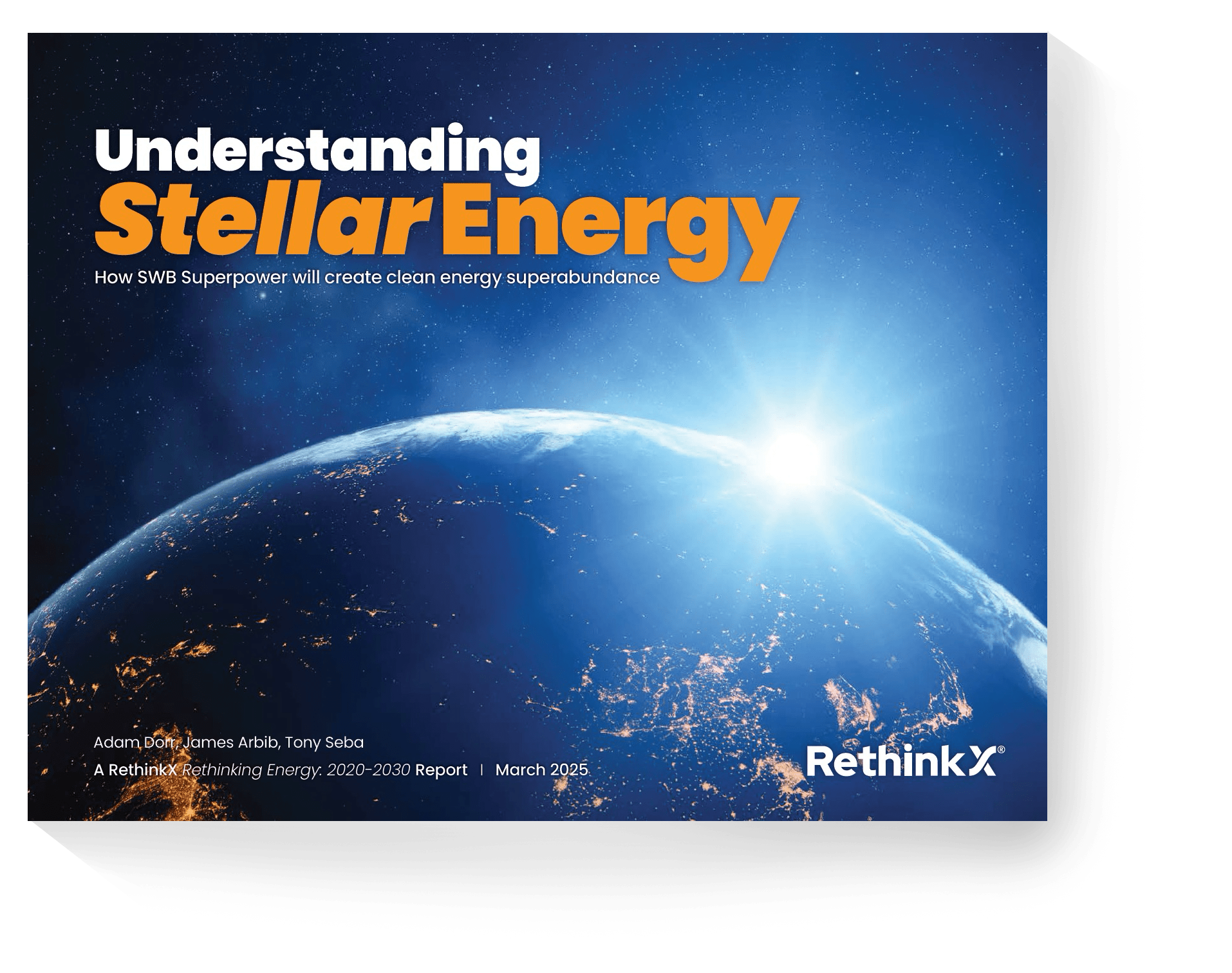

We are in the midst of the most profound disruption of the energy sector in over a century.
The final outcome will be a Stellar Energy System™ based overwhelmingly on solar power, wind power and batteries (SWB).
This system has the potential for prosperity, productivity and resilience at levels that have been unimaginable until now.
What is Stellar Energy?
Stellar Energy System (n): A system in which a critical mass of solar power, wind power, and battery energy storage assets enables society to become energetically self-sustaining via clean energy superabundance.
Today's gigantic extractive flows - including fossil fuels, ongoing material inputs, and the enormous global infrastructure and logistics to support them - become unecessary.
Like the sun, once a Stellar Energy System passes the ignition point, it enters a stable state of radiance in which clean energy is available in such abundance that we not only meet today's needs without causing damage but actively heal and restore past harms to people and the planet.

Yesterday:
Energy Scarcity
Fossil fuels have been our primary energy source, powering modernity for over one hundred years. Fire, fuels, engines and electricity. Energy is integral to our survival on this planet.
Today:
Energy Inequality
Though wealthy nations have energy abundance, macroeconomics and geopolitics and cost mean that energy access remains constraining, volatile and unpredictable for many.
Tomorrow:
Energy Superabundance
Unlike fossil fuels, which were only able to bring humanity relative energy abundance with a whole host of negative consequences, SWB offers a stellar path to clean energy superabundance worldwide over the next two decades.
What is Superabundance?
A good or service becomes superabundant when marginal cost is near-zero and supply overwhelmingly exceeds inelastic demand much or all of the time.
Superabundance fundamentally breaks scarcity-based economics because the per-unit equilibrium price at the actual quantity of available supply is too low to support traditional market transactions.
Superabundance necessitates new and entirely different kinds of business models, as we saw with the rise of the internet and the emergence of information superabundance.
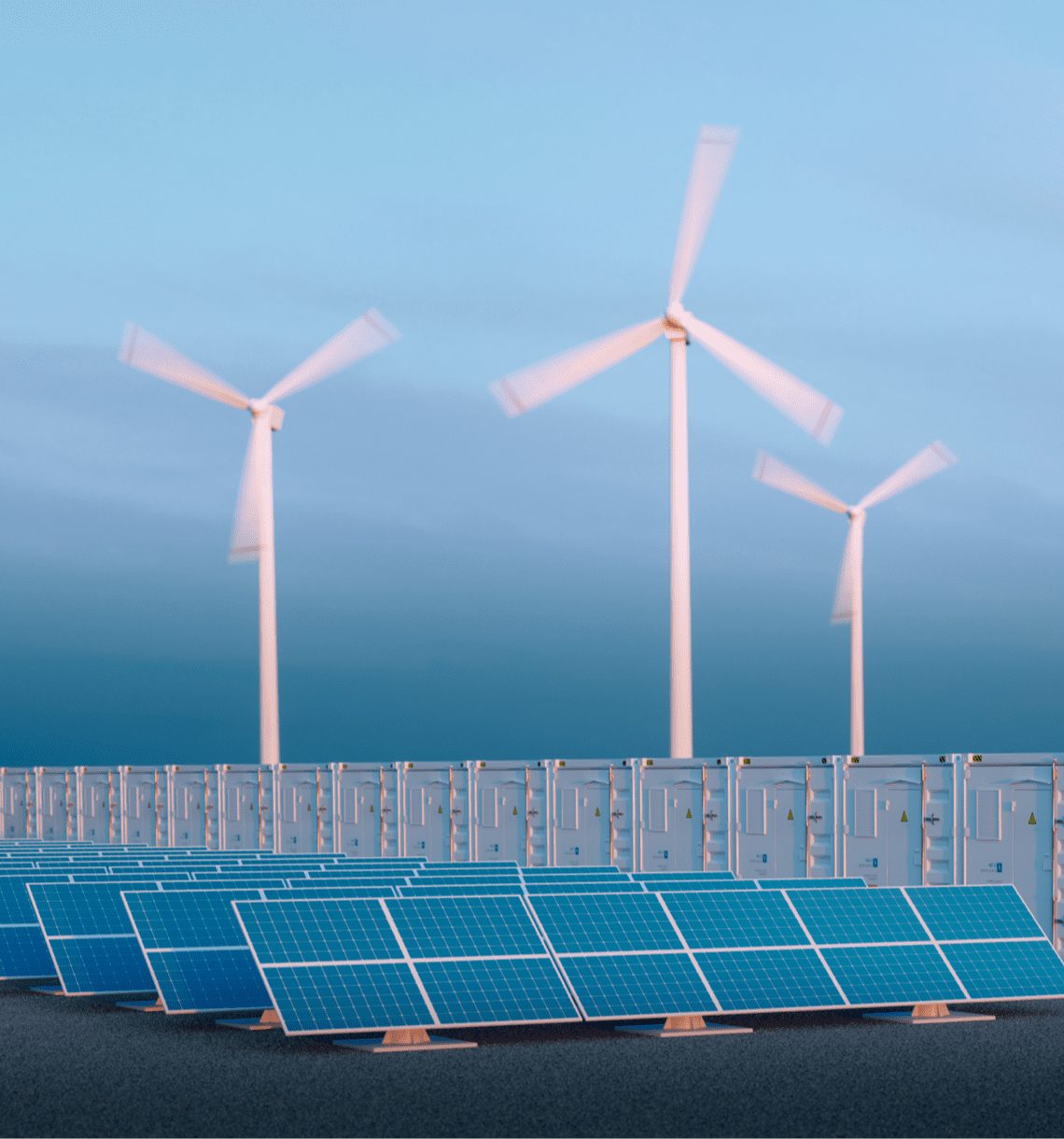
Energy is prosperity.
The data in this graph show that there are no exceptions..
✘ No energy-poor country is economically rich
✘ No energy-rich country is economically poor
Stellar Energy systems offer a unique opportunity for countries to climb the energy-prosperity curve.
-min.png?width=1991&name=ElectricityGeneration_GDP-3%20(1)-min.png)

Stellar Energy Systems can bring clean energy superabundance to every populated region of the planet at a fraction of the time, energy and cost of today's conventional energy system.

"With enough energy, almost anything is possible. Without it, nothing is possible"
- RethinkX
RethinkX's Stellar Energy Explorer illustrates how Stellar Energy would work in any region on earth.
Our Stellar Energy Explorer lets you rapidly model scenarios for SWB Superpower and the pathway to superabundant energy almost anywhere on earth.
.png?width=3227&name=RethinkX-Stellar%20Energy-World%20map%20banner%20(2).png)
Want to understand how Stellar Energy would work in your town, city or region?
Stellar Energy is possible anywhere on Earth, and we want to help make this happen!
Our team are happy to consider requests for a Stellar Energy report for any region.
Simply fill out the form and we'll get back to you.
Put your region on the map.
Implications of a Stellar Energy System
Social
- Prosperity: Rising standards of living for everyone as energy costs fall
- Poverty reduction: Greater affordability of goods and services raises standards of livingnu
- Access, freedom and opportunity: Democratized energy access catalyzes prosperity and standards of living
- Security: Greater affordability, access, and reliability of goods and services leads to greater energy, economic and environmental security
Economic
- New industries: New value based on products and services previously impossible
- Productivity: Greater value creation across the global economy
- Affordability: Reduction in cost of all goods and services
- Accessibility: Opportunity for communities of all sizes to participate in industries previously inaccessible
- Innovation: Superabundant clean energy leads to superabundant possibility
Geopolitical
- Energy Security and Independence: Decrease in reliance upon energy imports and volatile energy prices
- Peace: Increased cooperation and trade, decreased conflict and violence
- Resource conflict reduction: decrease in local, regional and international disputes over scarce fossil fuels
- Resilience: Increased capacity to recover from natural and human-made catarophies
Environmental
- Climate change mitigation: Near-total mitigation of energy and transport greenhouse gas emissions and ecological footprint
- Pollution and waste management: near-elimination of direct energy sector pollution
- Climate restoration: dramatic expansion of affordable carbon withdrawal and ocean alkalization options
Become an expert on Stellar Energy. Read the full report.

Free download
Understanding Stellar Energy: How SWB Superpower will create clean energy superabundance

Watch our researchers discuss the findings of this report below.
Towards a Stellar Future...
Stellar Energy is an essential pillar of humanity's superabundant future that RethinkX founders Tony Seba and James Arbib describe in their new book STELLAR: A World Beyond Limits And How To Get There.
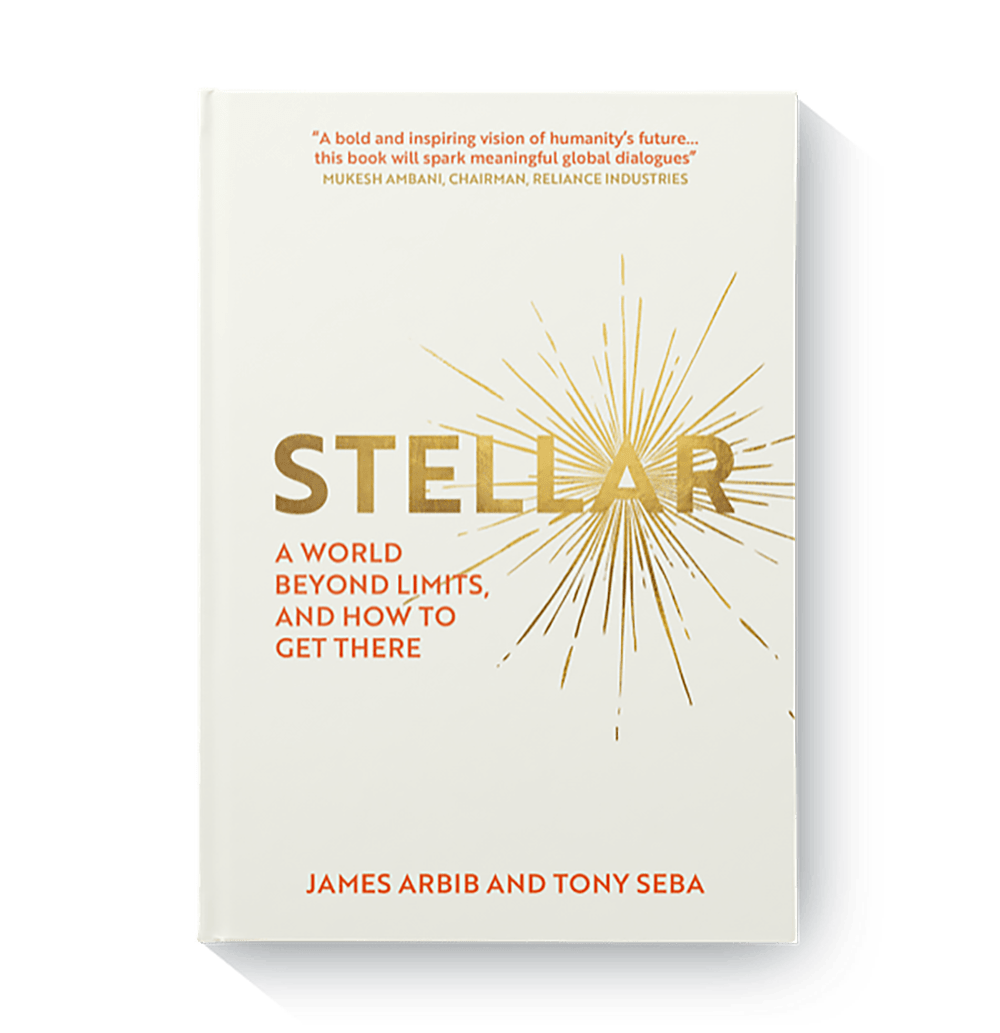
Previous Energy Reports
ENERGY REPORT
Rethinking Energy 2020-2030
In Rethinking Energy 2020-2030 (published 2020) our analysis shows that 100% clean electricity from the combination of solar, wind and batteries (SWB) is physically possible and economically affordable across the entire continental United States as well as across most populated regions of the world by 2030.
Solar and wind are already the cheapest new generation options, and cost less than existing coal, gas and nuclear power plants in many areas.
The cost of SWB systems will decline over 70% from 2020 to 2030, making disruption inevitable. Electricity from a 100% SWB system in 2030 will cost less than 3 cents per kilowatt-hour.
New investments in coal, gas or nuclear power are financially unviable.
Coal, gas and nuclear power assets will become stranded during the 2020s, and no new investment in these technologies is rational from this point forward.
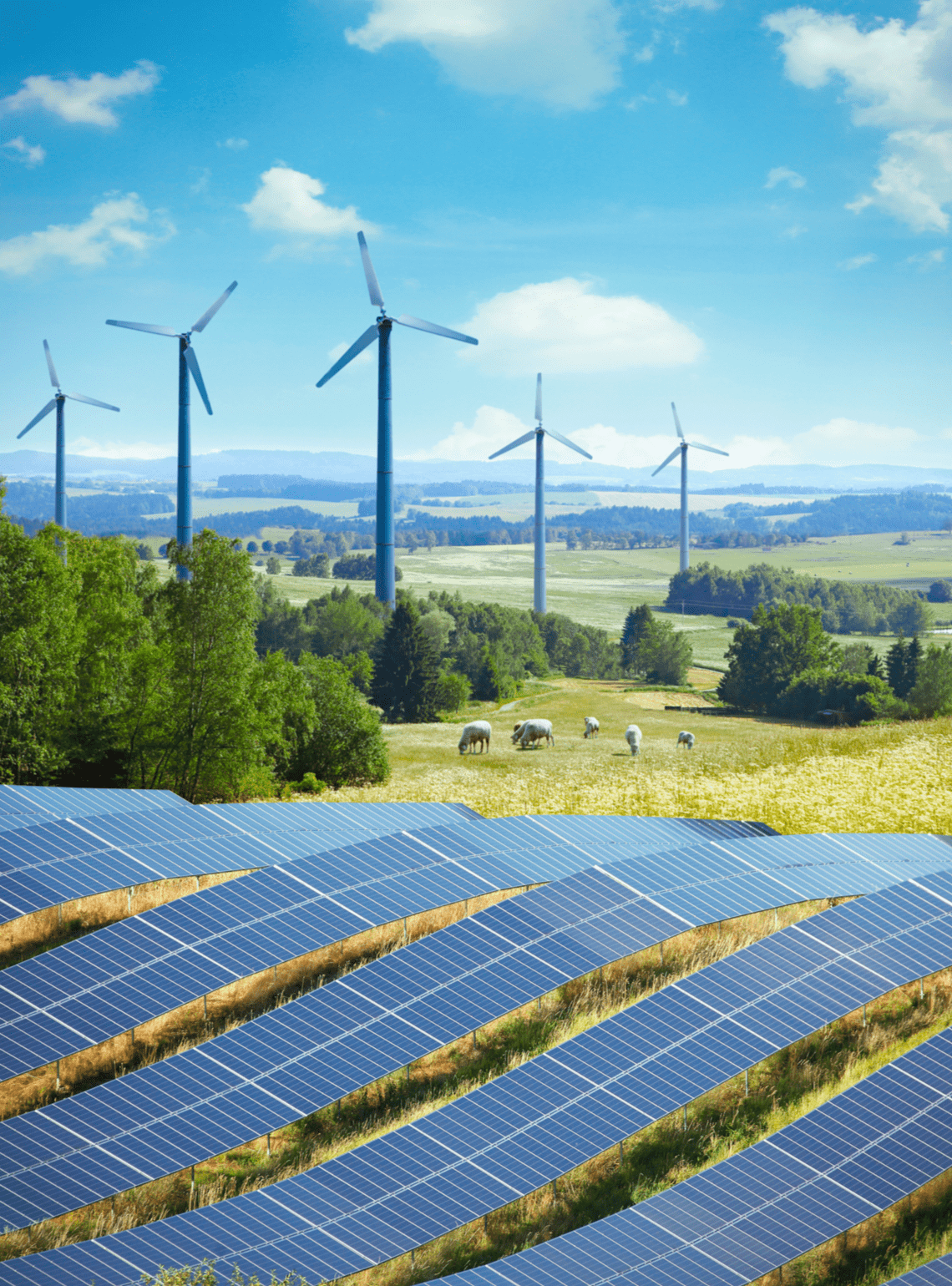
STRANDED ASSETS ENERGY REPORT
Rethinking Energy: The Great Stranding
In our Rethinking Energy: The Great Stranding report (published 2021), we explain how a large and rapidly expanding global financial bubble now exists around conventional coal, gas, nuclear and hydropower energy assets.
Conventional energy assets are severely mispriced, and their overvaluation is creating a growing asset valuation bubble in the conventional energy sector.
Coal, gas, nuclear and hydropower are no longer competitive with the combination of SWB, even using inaccurate mainstream levelized cost of energy (LCOE) calculations.
Solar and wind power reached cost parity and became cheaper than coal, gas, nuclear and hydropower several years sooner than mainstream analysts reported.
The widening gap between increasing conventional energy LCOE and decreasing SWB costs means that the SWB disruption will proceed faster than expected.
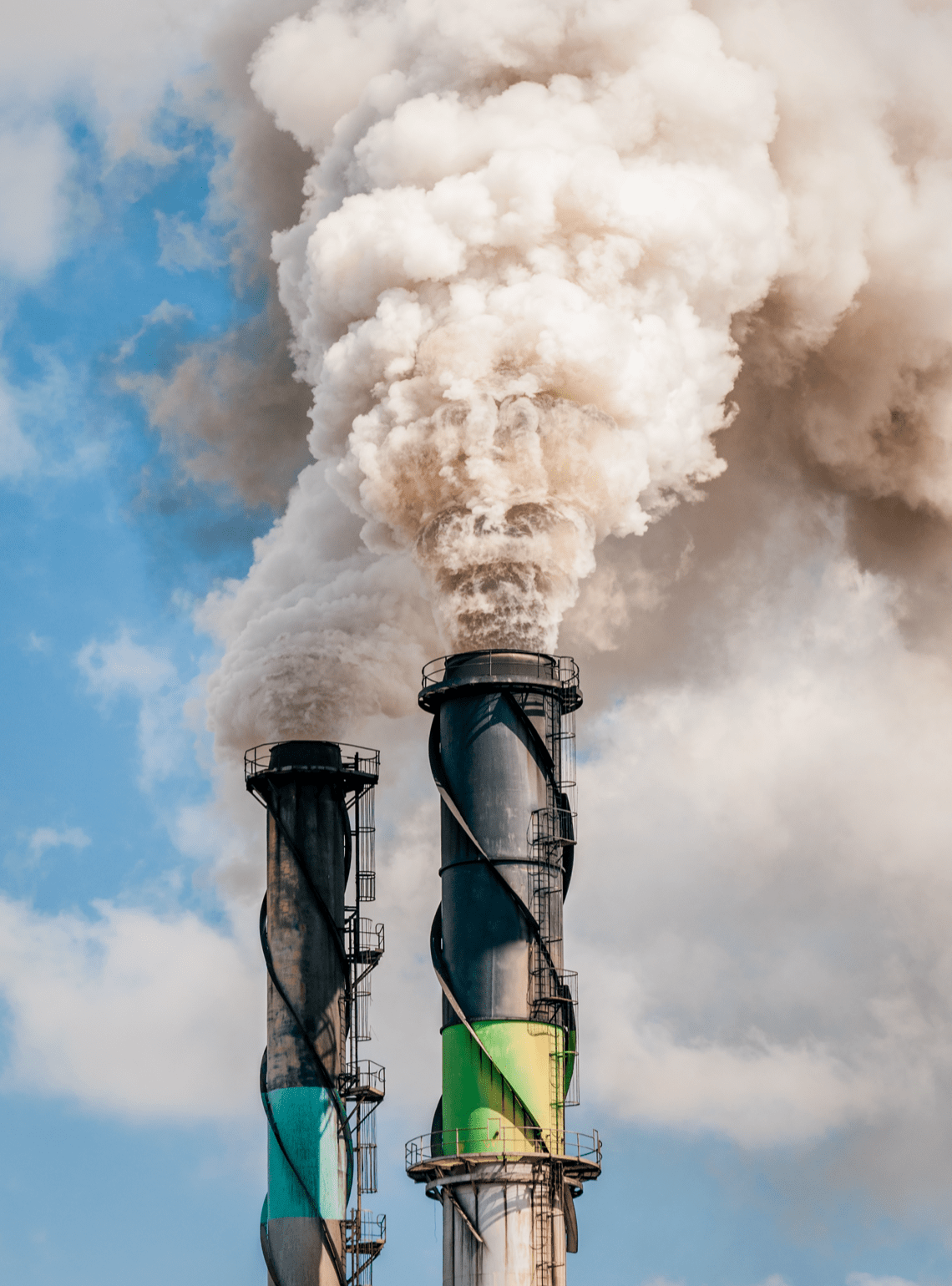
REGIONAL ENERGY PRIMER
Rethinking Energy: Germany's Path to 'Freedom Energy' by 2030
In our Policy Primer for German Energy Sector & Decision Makers (published 2022) we discuss how Germany is facing an unprecedented energy supply crisis as it rethinks dependence on Russian oil and gas imports. But this crisis also poses a unique opportunity...
Within the next decade, Germany can lead the world by creating a fully self-sufficient, zero-cost, clean energy system for less than the country’s current annual fossil fuel spending.
Germany could lay the foundations for a bold new era of long-term energy security and economic prosperity unlike anything seen before.
Our research shows that many different combinations of solar power, wind power and batteries can meet 100% of Germany’s roughly 500 terawatt-hours of electricity demand.
The key to meeting the current challenge is to fully understand technology disruption, its geopolitical implications and its race-to-the-top consequences.

Energy News
Frequently asked questions
No. Our research has shown that 100% SWB-based energy systems are not only feasible, they are also by far the most affordable energy systems going forward.
Since publishing our landmark findings in 2020, many other research teams around the world have reached similar conclusions, that 100% SWB based systems are possible, and are by far the most affordable energy system for our future.
Beyond the findings of our core analysis, it is also worth recognizing that the critique of solar and wind power on the basis of their utilization rate has never been valid. The validity of investments in energy assets, like any other asset class, are determined by their economic value, not by arbitrary standards of physical efficiency. If a low utilization rate invalidated the use of an energy asset, that would apply to conventional technologies as well as SWB—and we already have hundreds of billions of dollars in conventional generating assets that are only utilized a small fraction of the time.
For example, California already only uses its full electric power generating capacity about 50% of the time. 'Peakers', or power plants that are only used during periods of peak demand, are typically utilized less than 10% of the time, yet the low utilization rate of gas-powered peakers did not prevent society from investing in them.
Moreover, virtually all regions worldwide require by law that power plant utilities maintain a significant 'operating reserve', meaning a legally-mandated excess of capacity, just in case there is unexpectedly more demand than ever before. Some of this operating reserve is required to be 'spinning reserve' (i.e. the generators are actively spinning) which can be deployed near-instantly if needed. A portion of power plant (typically gas) hours are dedicated to providing spinning reserves, meaning that they literally sit there burning fuel just in case it is ever needed on a moment’s notice! So, in addition to a low utilization rate, spinning reserves based on fossil fuels are also very costly and wasteful—unlike equivalent reserves of SWB which do not burn fuels when in standby mode.
Read the full answer here
False. 100% SWB is possible in every region on earth that has access to sunshine or wind resources and is willing to invest in the infrastructure needed to harvest and store it. This includes the high-latitude regions.
In the past, global advantages in energy production lay with the regions that have natural endowments of fossil fuels, and the distribution of these resources is starkly uneven. In the future, however, the energy advantage will tend to lie with the tropical and equatorial regions with the most abundant sunshine. More importantly, no single region will possess an overwhelming energy advantage or disadvantage, because unlike fossil fuels sunshine and wind are everywhere.
Read the full answer here
False. Our previous research has shown that long-term seasonal energy storage is not required in order to meet 100% of existing electricity demand.
Our current research confirms that weeks or months of energy storage is not a requirement for the electrification of transportation and heating. Most geographic regions need only a few days' worth of battery energy storage.
Several days' worth of energy storage for the entire planet is still an extremely large quantity of batteries, but it is well within the range of what is feasible to produce over the next two decades as the disruptions proceed. Once the batteries are produced, their stock can largely be recycled over time. This means the raw materials requirement for battery stock will exhibit a large one-time pulse during the initial build out, followed by a much lower requirement for ongoing upkeep.
Read the full answer here
No. There is no fundamental shortage of raw materials. Lithium, cobalt, manganese, nickel and other metals are relatively abundant on the Earth's crust. History shows that there are virtually no examples where supply failed to meet demand.
The highest-quality ores are of course finite, but mining can target lower-quality ores as economic incentives necessitate.
Proven reserves (commonly cited as the limiting quantity) only reflect exploration and production to date. Actual materials in place are vastly larger, and recoverability depends on technological and economic factors—both of which change dramatically in favor of production when demand creates the necessary incentive.
There are no historical examples of supply failing to meet demand for materials that are not scarce. Gold, platinum, and gemstones are fundamentally scarce in a way that the metal ingredients in lithium-ion batteries are not. Cobalt, for example, is at least 10,000 times more abundant than gold, but only 50 times more cobalt is produced each year (about 123,000 tonnes) than gold (about 3,200 tonnes) at present.
Temporary supply shortages around material bottlenecks do occur. These shortages spark additional investment in exploration and production whenever market demand signals that additional supply is needed.
Grid storage applications don’t require high-performance lithium-ion batteries, and can instead use types of batteries that use only abundant materials. There are six major lithium-ion battery chemistries in commercial production today; lithium cobalt oxide, lithium manganese oxide, lithium iron phosphate, lithium nickel manganese cobalt oxide, lithium nickel cobalt aluminium oxide and lithium titanate. Lithium itself actually comprises only a small fraction of the battery’s mass–typically less than 5%. Cobalt, manganese, and nickel types are the highest-performance chemistries at the moment, and these are also the least-abundant metals. Iron, phosphorus, aluminum and titanium are abundant.
Read the full answer here
Yes. Battery supply will be the limiting factor to deployment of renewables and EVs. However, the demand from these sectors will create massive incentive to ramp up battery supply.
Tesla decided to build the first gigafactory when it realized there wasn’t enough global capacity to meet their own demand for batteries. Since starting Gigafactory 1 in Nevada in 2016, dozens of other major factories have been built, and more are in the pipeline. The planned capacity for battery production is approaching the TWh/year scale.
Battery supply will be the limiting factor, or bottleneck, for the deployment of renewables and EVs. But by the same token, the enormous demand from those sectors will create massive incentives to ramp up battery supply. This bottleneck will therefore constrain but not prevent the disruption.
Read the full answer here
False. Switching to clean technologies will save money.
The reason why disruptions happen in the first place is because the new technologies outperform the older ones in terms of cost and capability, and therefore outcompete them on a purely economic basis. (Watch this video to learn more about Disruptions from Adam Dorr, Director of Research at RethinkX)
Disruptions would not occur if the new technologies were not overwhelmingly cost-competitive. It therefore follows that adopting the new technologies will cost less, not more, than continuing with older technologies. And this is purely in economic terms, without including the environmental, social, health and other externalized costs of fossil fuels and combustion engine vehicles.
The costs and capabilities of SWB have been consistently improving for several decades. Since 2010, solar PV capacity costs have fallen nearly 90%%, onshore wind capacity costs have fallen more than 50% and lithium-ion battery capacity costs have fallen over 90%.
These cost improvements are consistent and predictable, and each of the technologies will continue to traverse a remarkable experience curve throughout the 2020s. SWB will be overwhelmingly competitive on a purely economic basis in all regions by 2030.

-min.png?width=1280&name=Introduction%20to%20(1)-min.png)
-min-1.png?width=732&name=Copy%20of%20RethinkX%20-%20In%20the%20News%20(5)-min-1.png)
-min-1.png?width=732&name=Copy%20of%20RethinkX%20-%20In%20the%20News%20(4)-min-1.png)
-min-1.png?width=732&name=Copy%20of%20RethinkX%20-%20In%20the%20News%20(2)-min-1.png)
-min-3.png?width=732&name=Copy%20of%20RethinkX%20-%20In%20the%20News%20(1)-min-3.png)

.png?width=732&name=Copy%20of%20RethinkX%20-%20In%20the%20News%20(6).png)
.png?width=732&name=Copy%20of%20RethinkX%20-%20In%20the%20News%20(5).png)
.png?width=732&name=Copy%20of%20RethinkX%20-%20In%20the%20News%20(2).png)


-min.png?width=732&name=Copy%20of%20RethinkX%20-%20In%20the%20News%20(10)-min.png)


-min.png?width=732&name=Copy%20of%20RethinkX%20-%20In%20the%20News%20(6)-min.png)
-min.png?width=732&name=Copy%20of%20RethinkX%20-%20In%20the%20News%20(3)-min.png)

-min.png?width=732&name=Copy%20of%20RethinkX%20-%20In%20the%20News%20(2)-min.png)










.png?width=732&name=Copy%20of%20Website%20imagery%20-%20Featured%20Image%201200x628%20(9).png)
.png?width=732&name=Website%20imagery%20-%20Featured%20Image%201200x628%20(3).png)



